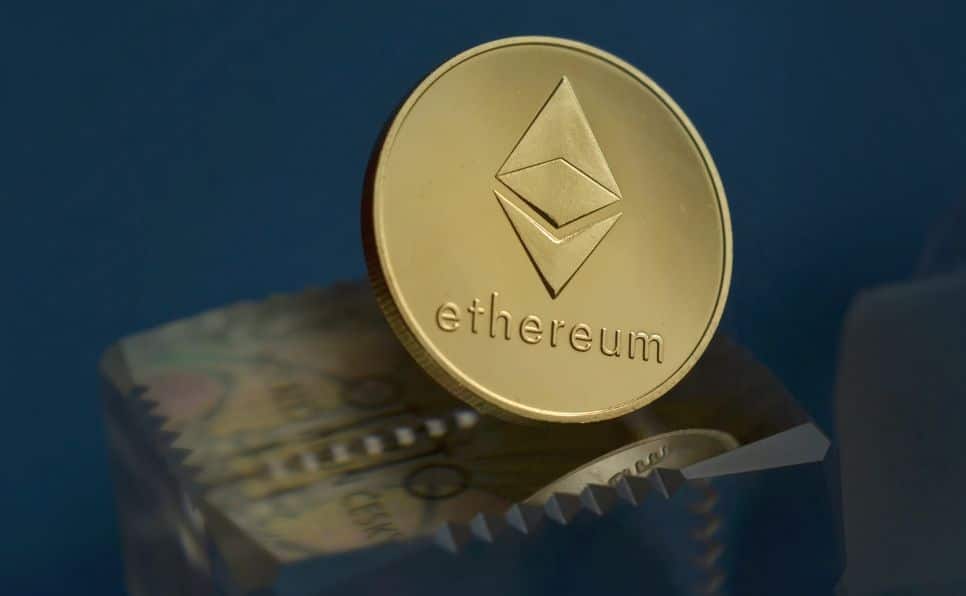You may have heard of Ethereum, a distributed public blockchain network. But on the off chance that you have no idea what we’re talking about, let us break it down for you. If you’re looking to buy Ethereum in Miami or beyond, RockItCoin can be of service.
Although Ethereum is related to Bitcoin, the two differ significantly in terms of purpose and capability. Bitcoin is one specific application of blockchain technology. It’s a peer-to-peer electronic cash system in which Bitcoin payments are exchanged. But in the Ethereum blockchain, the focus is on running the programmatic code of any decentralized application.
If you’re still saying “huh?,” stick with us. Instead of mining for Bitcoin, Ethereum miners work to earn Ether, a crypto-token that fuels the network. So yes, Ether is a tradeable cryptocurrency. But application developers also use Ether to pay for transaction fees and services on the Ethereum network. In this article, we will explain the basics of Ethereum’s technology, and provide an overview of why it is so popular.
Benefits Of Ethereum’s Technology
Here are some of the key benefits of Ethereum’s technology:
- Security: Ethereum’s decentralized platform is more secure than traditional centralized systems because it is not controlled by any single entity. In a decentralized system, data is stored across a network of computers, making it more difficult for hackers to access and manipulate data.
- Transparency: Ethereum’s decentralized platform is transparent because all transactions and data are publicly accessible on the blockchain. This makes it easier to track and verify transactions, increasing trust and accountability.
- Efficiency: Ethereum’s decentralized platform can be more efficient than traditional centralized systems because it can automate processes using smart contracts. Smart contracts are self-executing programs that can execute transactions automatically when certain conditions are met, making processes faster and cheaper.
- Accessibility: Ethereum’s decentralized platform is more accessible because it does not require intermediaries like banks or governments to access and use the system. Anyone with an internet connection can access and use the Ethereum platform, making it more inclusive and empowering for people around the world.
- Innovation: Ethereum’s decentralized platform is more innovative because it enables developers to build new and innovative decentralized applications and services. Because the platform is open source, anyone can build on top of it, leading to a wide range of new and innovative use cases.
Overall, the benefits of Ethereum’s decentralized platform make it an attractive option for developers and users who value security, transparency, efficiency, accessibility, and innovation. As the Ethereum ecosystem continues to grow and mature, we can expect to see even more benefits emerge in the years to come.
The EVM
The Ethereum Virtual Machine is Ethereum’s core innovation. It’s a Turing-complete software that allows anyone to run any programming regardless of programming language. What exactly does this mean? Instead of building an original blockchain for each new application, potentially thousands of different applications can be built on one application.
The Ethereum Virtual Machine (EVM) is a key component of the Ethereum platform, providing a powerful and flexible environment for developers to build decentralized applications (dApps) and smart contracts. Here is a summary of how the EVM works and its role in the Ethereum ecosystem.
At a high level, the EVM is a virtual machine that runs on top of the Ethereum blockchain. It provides an environment for executing smart contracts, which are self-executing programs that run on the blockchain and control the transfer of digital assets. Smart contracts can be used for a wide range of applications, including decentralized finance (DeFi), gaming, and more.
The EVM is a stack-based virtual machine, which means that it uses a stack to manage data and instructions. When a smart contract is executed on the EVM, it is compiled into bytecode, which is a series of machine-readable instructions that can be executed by the EVM. The EVM reads the bytecode and executes it, manipulating the stack as it goes.
One of the key features of the EVM is that it is designed to be Turing-complete, which means that it can execute any program that can be expressed in a formal programming language. This makes it possible to build complex applications and smart contracts that can handle a wide range of use cases.
The EVM is also designed to be deterministic, which means that it always produces the same output for the same input. This is important for ensuring that smart contracts can be trusted and that they will behave predictably on the blockchain.
The EVM is implemented in a variety of programming languages: this allows developers to choose the language that they are most comfortable with when building smart contracts and dApps on the Ethereum platform.
One of the challenges of the EVM is that it is not particularly efficient, as it requires a significant amount of computational power to execute smart contracts. This has led to scalability issues for the Ethereum platform, as the network can become congested when there are too many smart contracts executing at the same time.
To address this issue, the Ethereum community has implemented a major upgrade called Ethereum 2.0, which introduced a new consensus mechanism called Proof-of-Stake (PoS). PoS is designed to be more efficient and scalable than the Proof-of-Work (PoW) consensus mechanism, which is used by the EVM.
The Ethereum Virtual Machine is a critical component of the Ethereum platform, providing a powerful and flexible environment for developers to build smart contracts and dApps. While the EVM has some challenges, such as scalability issues, it is a key reason why Ethereum has become one of the most successful and innovative blockchain platforms in the world. With the ongoing development and improvement of the EVM and the Ethereum platform as a whole, we can expect to see continued growth and innovation in the years to come.
For What Can Ethereum Be Used?
Ethereum can be used to build and deploy decentralized applications (think banks providing loans to intermediary services like title registries and voting systems). It can also be used to build Decentralized Autonomous Organizations (DAOs), which are completely autonomous, decentralized organizations with no single leader.
Here is a summary of some of the systems that use Ethereum’s technology:
- Supply Chain Management: Ethereum can be used to create decentralized supply chain management systems. These systems use smart contracts to automate supply chain processes such as tracking and verifying the origin and authenticity of goods.
- Gaming: Ethereum can be used to create decentralized gaming applications that allow players to trade in-game assets and currency using cryptocurrency. This makes it easier for players to own and trade their virtual assets, rather than relying on centralized gaming platforms.
- Non-Fungible Tokens (NFTs): Ethereum is the most popular blockchain platform for creating and trading non-fungible tokens (NFTs). NFTs are unique digital assets that can represent anything from art and music to virtual real estate and sports memorabilia. The Ethereum platform allows developers to create and sell NFTs using smart contracts.
- Decentralized Applications (dApps): Ethereum can be used to create a wide range of decentralized applications (dApps) that are not controlled by any single entity. These applications can be used for anything from social media and messaging to file sharing and storage.
Overall, Ethereum’s flexibility and versatility make it a popular choice for developers who want to build decentralized applications and services. As the Ethereum ecosystem continues to grow and evolve, we can expect to see even more innovative use cases emerge in the years to come.
Benefits of Ethereum Decentralized Platforms
Decentralized platforms are untouchable to third parties, so no changes will be made to the data. Apps are configured around a consensus principle which essentially makes them corruption-proof. They’re also secure because there’s no central point of failure. Finally, there’s no downtime because apps can’t ever be switched off.
The best part? You can now buy and sell Ethereum via our machines! If you want to buy Ethereum in Miami or beyond, visit your nearest RockItCoin location today to get started.
Source: Block Geeks





